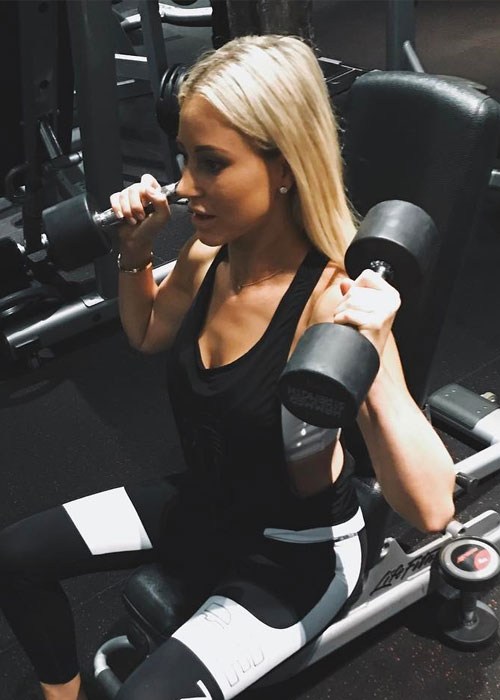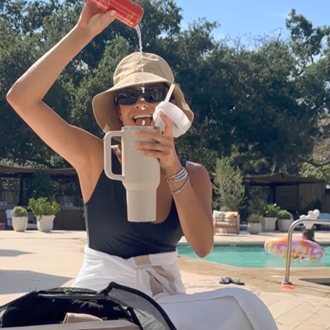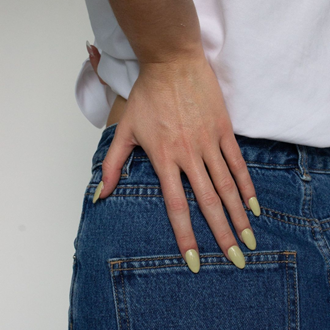Including why it won’t bulk you up like a bodybuilder
If you’re looking to get stronger and build lean muscle while you exercise, look no further than weights training. Besides being easily accessible (all gyms would be well equipped in this area), they can also be incorporated into your exercise routine to make your workout just that little bit harder so it becomes a greater physical challenge. Ben Lucas, personal trainer and founder of Flow Athletic, shares his best advice on weights training.
Why you should try weights training
Just like eating a balanced diet, it’s important to go for a varied exercise plan to stay fit and healthy. “The main reason to try weights training is to increase lean muscle mass, which will lead to increasing metabolism and therefore assist in the ability to burn fat,” says Lucas. “While cardio is fine for weight loss, it is lifting weights that will actually change the shape of your body and your body composition.”
The biggest myth about weights training
If you think you’re going to just look bulky after introducing weights into your routine, think again. “It depends of [your] own personal genetic makeup, but it’s unlikely,” says Lucas. “Few women have the hormonal profile that allows them to bulk up, and you have to be in a calorie surplus (eating more than you are burning) to put on bulk. So if your nutrition is under control this will not be an issue.”
The frequency of weights training
To get noticeable results, like toned legs and abs, it takes hard work and dedication - but we promise it’s worth it. “I would suggest two to three sessions of 45 minutes per week is sufficient for excellent results,” continues Lucas. “Get a trainer to create a program that is suitable for your own personal needs. You don’t need to hire someone three days per week - I would suggest getting a program and then going back every six to eight weeks to have it tweaked until you are comfortable enough to do that yourself.”
The different types of weights
Confused by which weight is best for each body area and type of exercise? This guide will have you sorted.
Barbells: These are great for squats and deadlifts to define the booty and work the legs.
Dumbbells: These are excellent for chest and shoulder presses as well as rows and curls to keep the upper body defined.
Kettlebells: These larger weights are great for swings and Turkish get-ups. These moves are awesome for improving cardio as well as toning your abs.
Exercises with weights
Here’s how to upgrade some easy exercises with the addition of weights. Lucas suggests the following:
Lunge walks: Hold a dumbbell in each hand and slowly lunge walk to your chosen destination (like the other side of the room) and back.
Overhead plate: Hold a plate overhead to do lunge walks. Keep your abs tight, your shoulders back and your arms straight up next to your ears to stay in alignment.
Front bar squat: Safely lift the bar up and ‘clean it’ so you are holding it at shoulder height. Go down into a squat from that position. Another way you can incorporate weights into this exercise is by holding a kettlebell in front of your chest while squatting.
Dumbbell press: To raise your heart rate even higher, hold a pair of dumbbells close in front of your shoulders with your elbows pointing down and your wrists pointing away from your body. Keep them there while you squat down, then press the weights up towards the roof as you return to a standing position.
Crunches: Hold a plate or weighted ball in front of you when doing crunches or Russian twists to add some resistance to the exercise.
For more fitness inspiration, check out our interview with personal trainer Tiffiny Hall.
Main image credit: @roxyjacenko

Iantha is BEAUTYcrew's Beauty Editor, and has been part of the team since the site launched in 2016. Besides pinky-nude nail polish and wispy false lashes, she has a healthy obsession with face masks and skin care ingredients. Her previous work can be found in Virgin Australia Voyeur, Women's Health, and SHOP Til You Drop.








